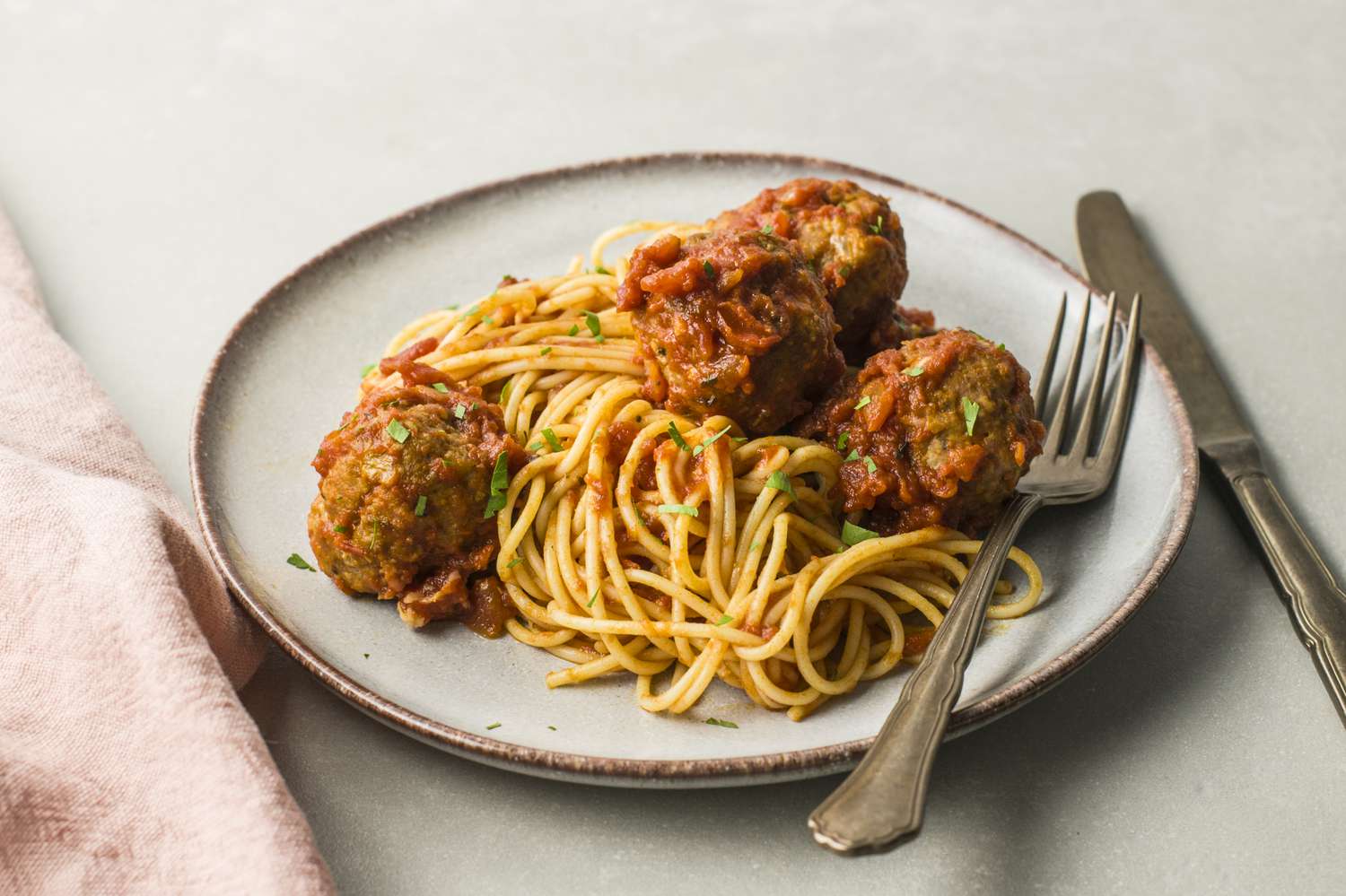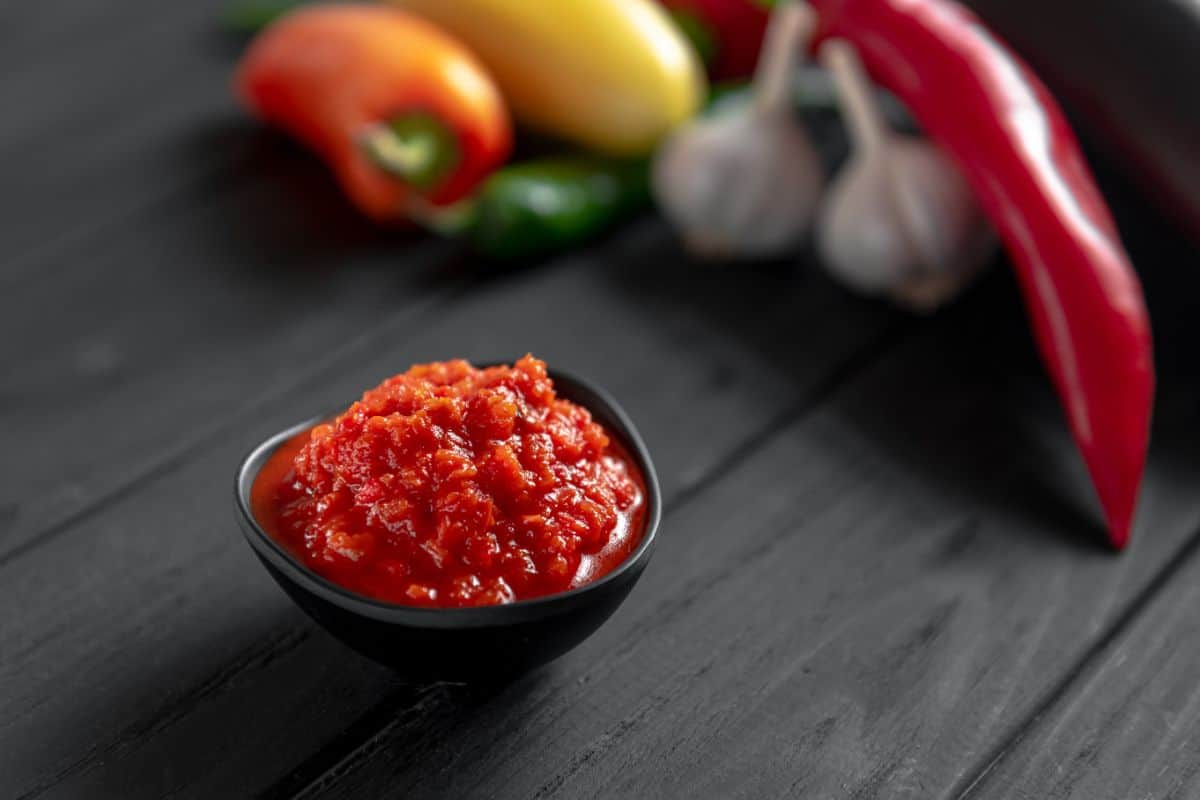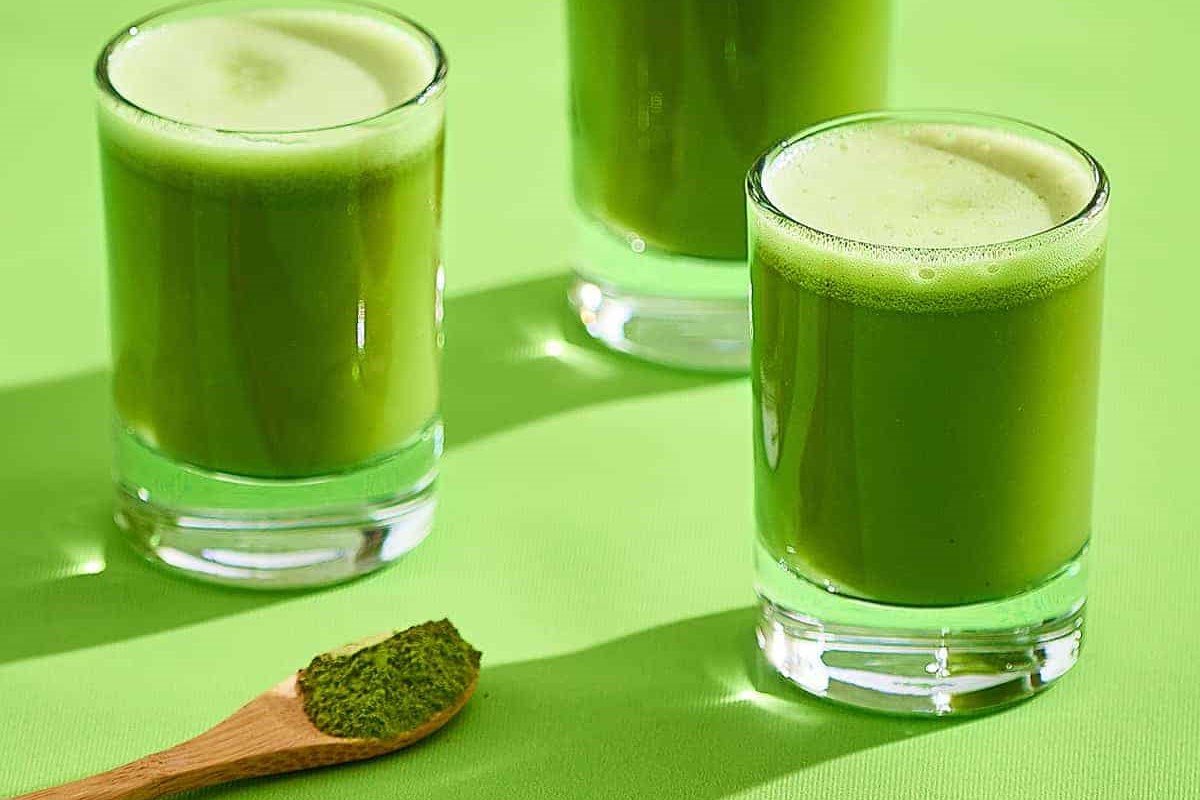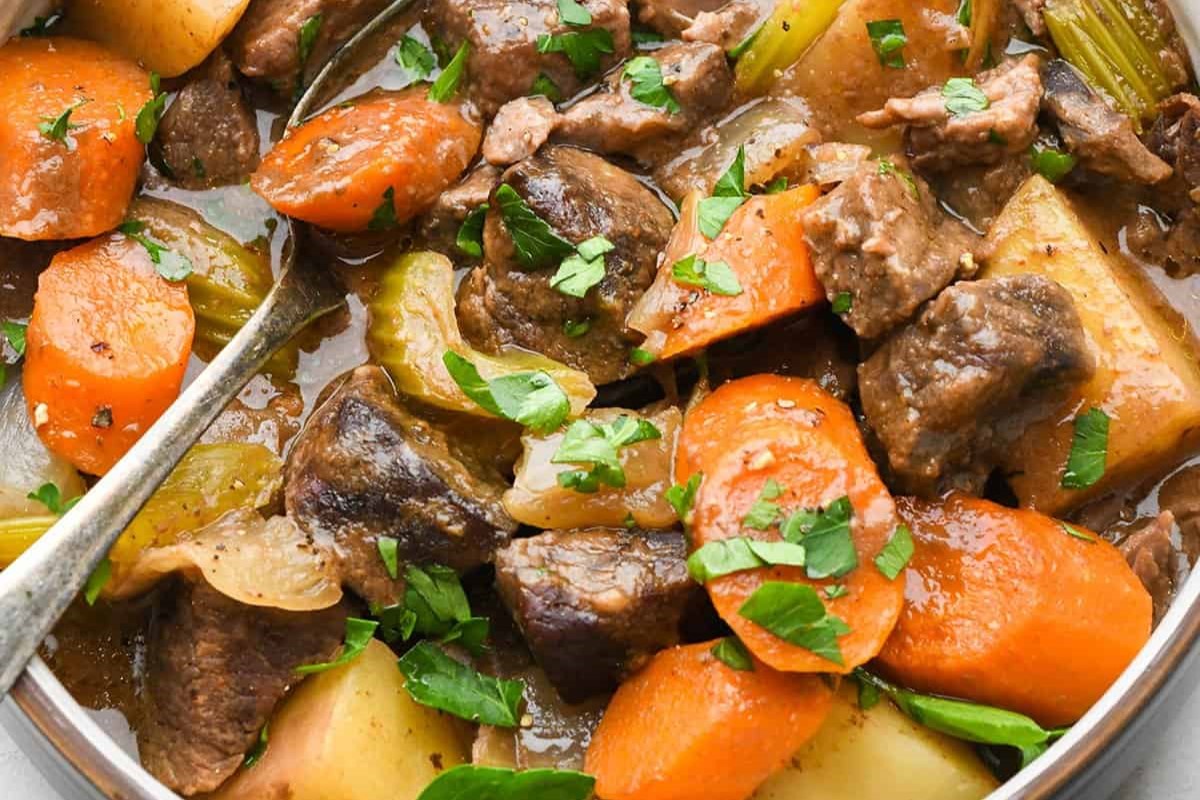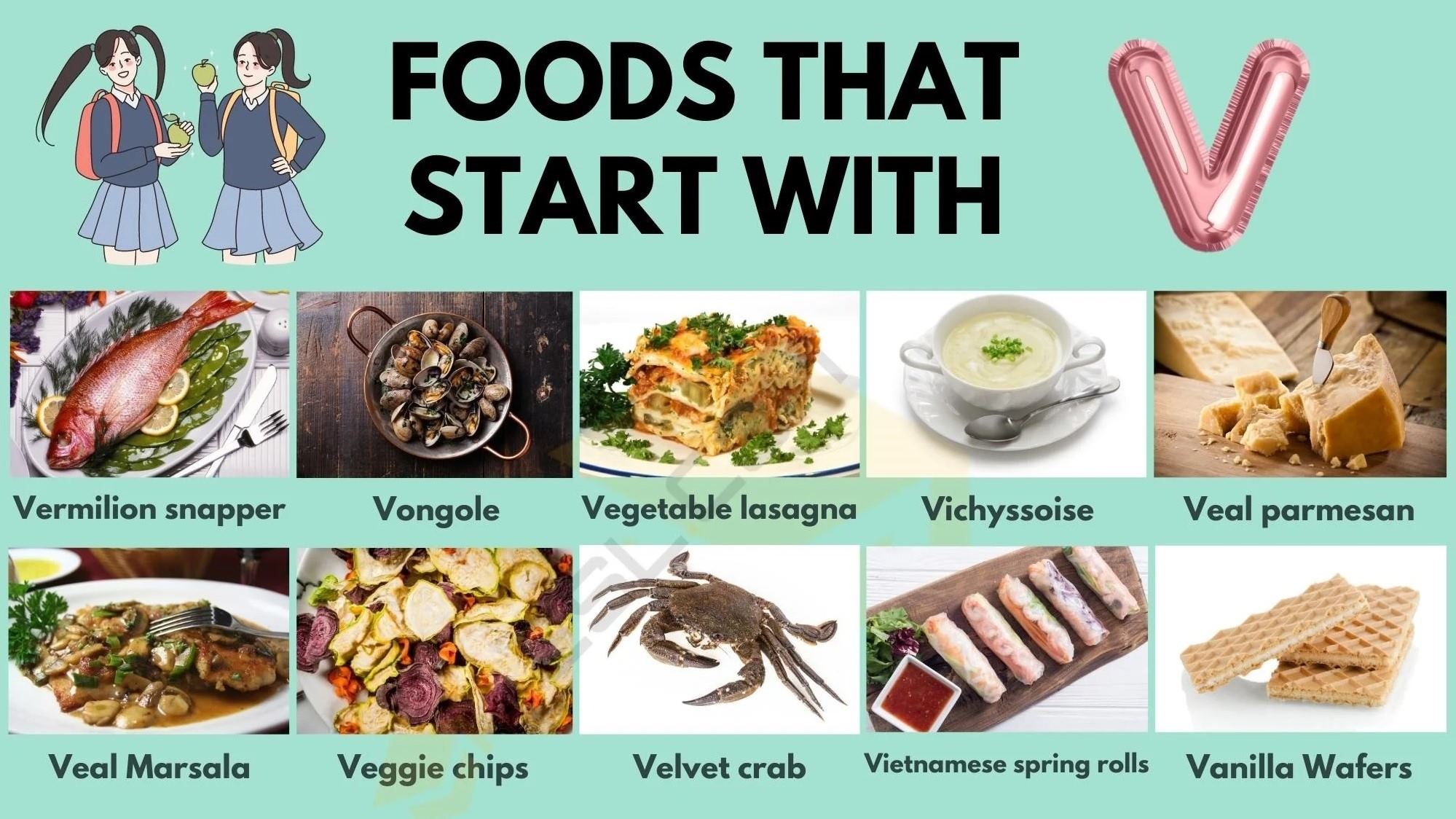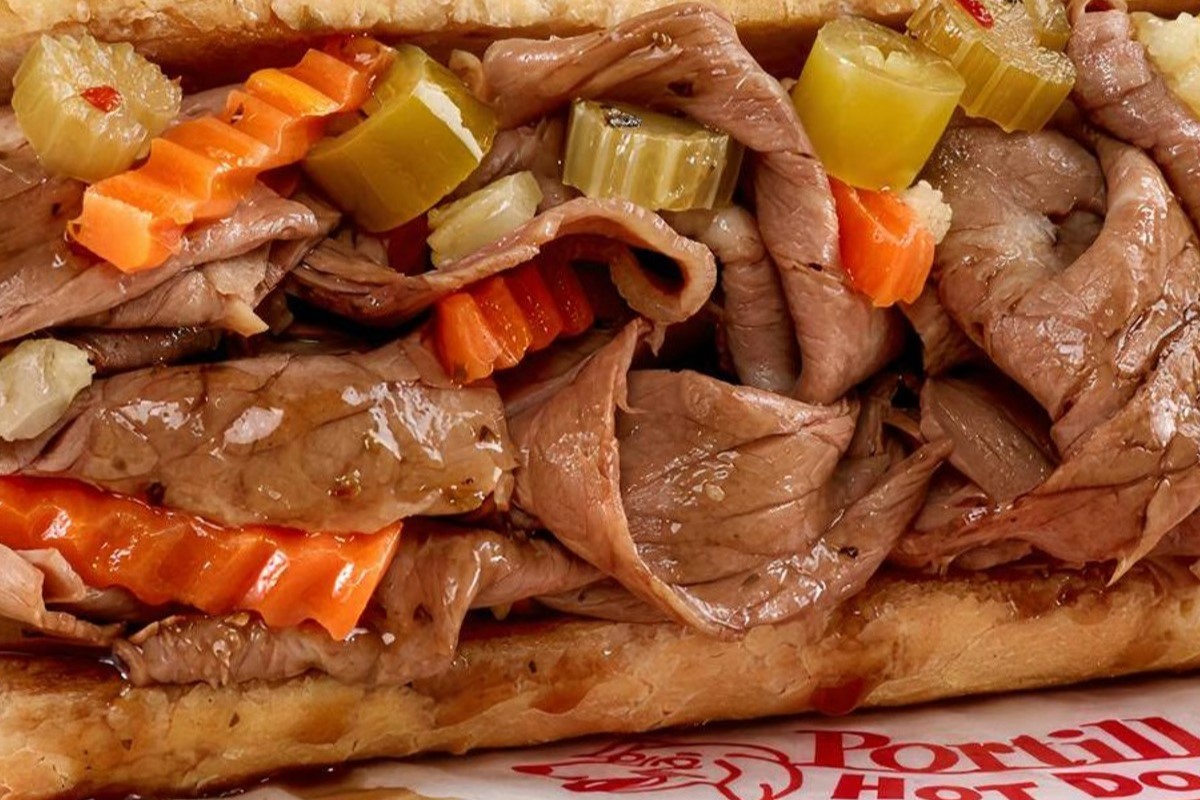Home>Food and Cooking>Delicious Alternatives To Green Peppers In Your Recipes
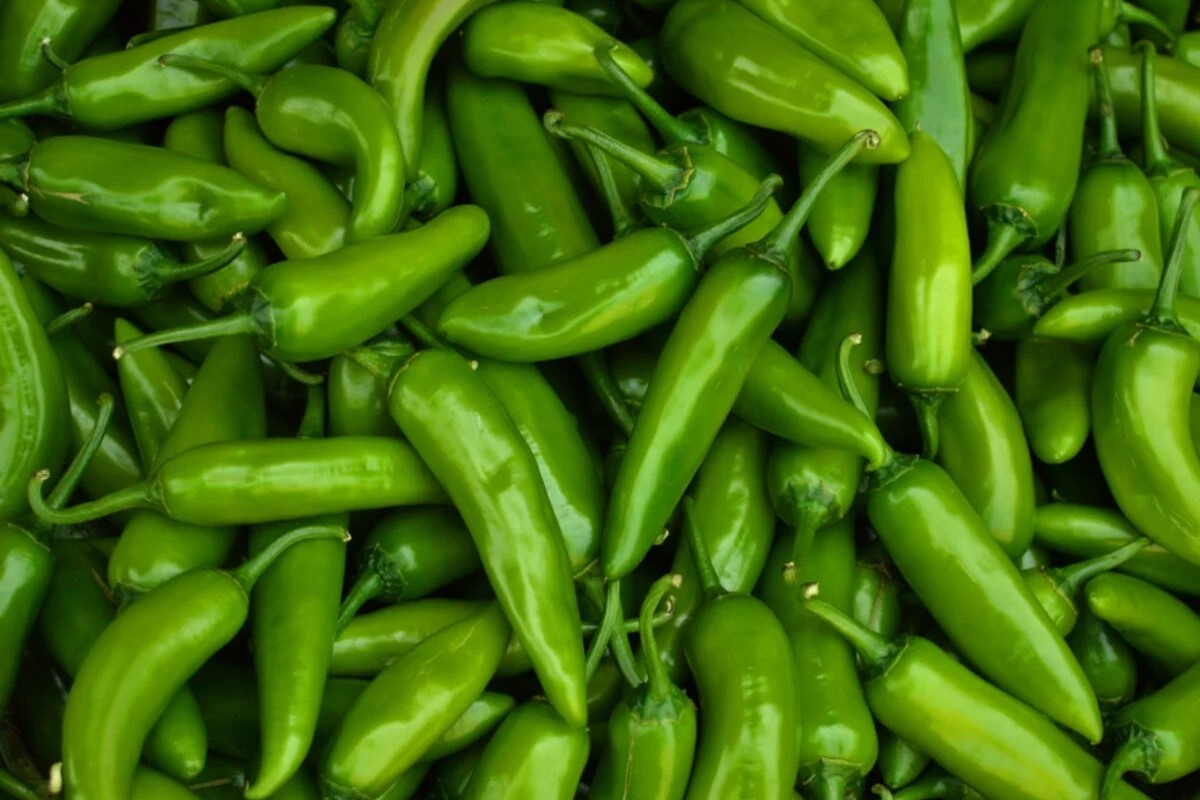

Food and Cooking
Delicious Alternatives To Green Peppers In Your Recipes
Published: January 12, 2024
Discover a variety of flavorful alternatives to green peppers for your culinary creations. Elevate your food and cooking with these delicious substitutes.
(Many of the links in this article redirect to a specific reviewed product. Your purchase of these products through affiliate links helps to generate commission for Noodls.com, at no extra cost. Learn more)
Table of Contents
Introduction
Green peppers are a popular ingredient in many recipes, adding a crisp texture and a slightly bitter, earthy flavor to dishes. However, there are times when you may want to explore other options to add a pop of color and a different flavor profile to your culinary creations. Fortunately, there are several delicious alternatives to green peppers that can elevate your dishes and bring a new dimension to your cooking.
In this article, we will explore a variety of colorful and flavorful alternatives to green peppers, ranging from the sweet and vibrant red, yellow, and orange bell peppers to the mildly spicy poblano and jalapeño peppers. Each alternative offers its own unique taste and texture, allowing you to experiment with different flavors and colors in your recipes.
Whether you're looking to add a touch of sweetness, a subtle heat, or a milder flavor to your dishes, these alternatives to green peppers can inspire you to get creative in the kitchen. So, let's dive into the world of colorful peppers and discover how they can enhance the taste and visual appeal of your favorite recipes.
Red Bell Peppers
Red bell peppers are a vibrant and versatile alternative to green peppers, offering a sweeter and fruitier flavor profile. These peppers are fully ripened versions of the green bell pepper, allowing them to develop a rich, sweet taste and a crisp, juicy texture. Their bright red color adds a visually appealing element to any dish, making them a popular choice for both culinary and aesthetic purposes.
When it comes to nutritional value, red bell peppers are a powerhouse of essential vitamins and antioxidants. They are an excellent source of vitamin C, providing more than double the amount found in green peppers. Additionally, they contain vitamin A, vitamin B6, and folate, making them a nutritious addition to your meals.
In terms of culinary applications, red bell peppers can be used in a wide range of dishes, including salads, stir-fries, soups, and sandwiches. They can be enjoyed raw, adding a sweet and crunchy element to fresh salads and vegetable platters. When roasted, red bell peppers take on a smoky, caramelized flavor, making them a delicious addition to pasta dishes, pizzas, and dips.
One popular way to incorporate red bell peppers into your cooking is by preparing a vibrant roasted red pepper sauce. This versatile sauce can be used as a flavorful topping for grilled meats, a dip for crispy vegetables, or a base for pasta dishes. By blending roasted red bell peppers with garlic, olive oil, and a touch of balsamic vinegar, you can create a luscious sauce that adds depth and complexity to your culinary creations.
Whether you're looking to add a burst of color to your dishes or infuse them with a sweet and tangy flavor, red bell peppers are an excellent alternative to green peppers. Their versatility, nutritional benefits, and vibrant hue make them a valuable ingredient in any kitchen, allowing you to elevate your recipes and delight your taste buds with their delightful sweetness.
Yellow Bell Peppers
Yellow bell peppers, also known as yellow capsicums, are a delightful alternative to green peppers, offering a bright and sunny addition to your culinary creations. These peppers are fully ripened versions of the green bell pepper, showcasing a mellow, sweet flavor and a crisp, juicy texture. Their vibrant yellow color adds a cheerful and appetizing element to dishes, making them a popular choice for those seeking to infuse their recipes with a burst of sunshine.
In addition to their visual appeal, yellow bell peppers are a nutritional powerhouse, packed with essential vitamins and antioxidants. Similar to their red counterparts, they are an excellent source of vitamin C, providing a generous dose of immune-boosting properties. Furthermore, they contain vitamin A, vitamin B6, and potassium, making them a valuable addition to a balanced and healthy diet.
When it comes to culinary versatility, yellow bell peppers shine in a variety of dishes, from salads and stir-fries to kebabs and fajitas. Their sweet and slightly tangy flavor pairs well with a wide range of ingredients, adding a refreshing and vibrant touch to any recipe. Whether enjoyed raw in a crisp, colorful salad or grilled to perfection for a smoky-sweet flavor, yellow bell peppers can elevate the taste and visual appeal of your favorite dishes.
One popular way to incorporate yellow bell peppers into your cooking is by preparing a flavorful stuffed pepper dish. By filling halved yellow bell peppers with a savory mixture of rice, lean ground meat, aromatic herbs, and melted cheese, you can create a satisfying and visually stunning meal. Baked to perfection, stuffed yellow bell peppers offer a delightful blend of flavors and textures, making them a crowd-pleasing option for family dinners or gatherings with friends.
Whether you're looking to add a touch of sunshine to your recipes or infuse them with a sweet and vibrant flavor, yellow bell peppers are an excellent alternative to green peppers. Their nutritional benefits, culinary versatility, and cheerful hue make them a valuable ingredient in any kitchen, allowing you to brighten up your dishes and tantalize your taste buds with their delightful sweetness.
Orange Bell Peppers
Orange bell peppers are a delightful and visually striking alternative to green peppers, offering a vibrant and sweet addition to a wide range of culinary creations. These peppers, like their red and yellow counterparts, are fully ripened versions of the green bell pepper, allowing them to develop a distinctively sweet and tangy flavor profile. Their bright orange color adds a cheerful and appetizing element to dishes, making them a popular choice for those seeking to infuse their recipes with a burst of color and a hint of sweetness.
In addition to their visual appeal, orange bell peppers are a nutritional powerhouse, packed with essential vitamins and antioxidants. Similar to red and yellow bell peppers, they are an excellent source of vitamin C, providing a generous dose of immune-boosting properties. Additionally, they contain vitamin A, vitamin B6, and fiber, making them a valuable addition to a balanced and healthy diet.
When it comes to culinary versatility, orange bell peppers shine in a variety of dishes, from salads and stir-fries to kebabs and pasta dishes. Their sweet and slightly tangy flavor pairs well with a wide range of ingredients, adding a refreshing and vibrant touch to any recipe. Whether enjoyed raw in a crisp, colorful salad or roasted to perfection for a caramelized, sweet flavor, orange bell peppers can elevate the taste and visual appeal of your favorite dishes.
One popular way to incorporate orange bell peppers into your cooking is by preparing a flavorful and nutritious bell pepper hummus. By blending roasted orange bell peppers with chickpeas, tahini, garlic, and a splash of lemon juice, you can create a vibrant and flavorful hummus that is perfect for dipping fresh vegetables or spreading on sandwiches and wraps. The addition of orange bell peppers adds a delightful sweetness and a pop of color to the traditional hummus, making it a visually appealing and delicious option for snacks and appetizers.
Whether you're looking to add a burst of color to your dishes or infuse them with a sweet and tangy flavor, orange bell peppers are an excellent alternative to green peppers. Their nutritional benefits, culinary versatility, and vibrant hue make them a valuable ingredient in any kitchen, allowing you to brighten up your recipes and tantalize your taste buds with their delightful sweetness.
Poblano Peppers
Poblano peppers, also known as Ancho chilies when dried, are a versatile and flavorful alternative to green peppers, offering a mild, earthy heat and a rich, smoky flavor to a wide range of dishes. These dark green, heart-shaped peppers are a staple in Mexican cuisine and have gained popularity in international culinary circles due to their unique taste and culinary versatility.
One of the most distinctive features of poblano peppers is their mild heat, which ranges from 1,000 to 2,000 Scoville heat units. This makes them significantly milder than other chili varieties, such as jalapeños or serranos, allowing them to add a gentle warmth without overwhelming the palate. Their mild heat, combined with their robust flavor, makes them an excellent choice for individuals who appreciate a subtle kick in their dishes.
In terms of culinary applications, poblano peppers shine in a variety of recipes, from savory stews and salsas to stuffed peppers and flavorful sauces. One popular and iconic Mexican dish that features poblano peppers is Chiles Rellenos, where the peppers are roasted, peeled, and stuffed with a savory mixture, then coated in a light, airy batter and fried to perfection. The result is a delicious and satisfying dish that showcases the unique flavor and texture of poblano peppers.
Another beloved use of poblano peppers is in the creation of rich and flavorful sauces, such as the classic Mexican mole. Mole poblano, a complex and deeply flavorful sauce, incorporates roasted poblano peppers, along with an array of ingredients such as chocolate, nuts, and spices, resulting in a velvety, aromatic sauce that pairs beautifully with meats, enchiladas, and tamales.
When it comes to nutritional benefits, poblano peppers are a good source of vitamins and minerals, including vitamin A, vitamin K, and vitamin E. They also contain capsaicin, a compound known for its potential health benefits, including anti-inflammatory and antioxidant properties. Additionally, poblano peppers are low in calories and high in dietary fiber, making them a nutritious and flavorful addition to a balanced diet.
Whether you're looking to add a subtle warmth and a depth of flavor to your dishes or explore the rich culinary heritage of Mexican cuisine, poblano peppers are an excellent alternative to green peppers. Their mild heat, smoky flavor, and culinary versatility make them a valuable ingredient in any kitchen, allowing you to infuse your recipes with a touch of authentic Mexican flair and a delightful depth of flavor.
Jalapeño Peppers
Jalapeño peppers are a popular and versatile alternative to green peppers, renowned for their distinctive spicy kick and robust flavor. These medium-sized chili peppers, originating from Mexico, have become a staple ingredient in a wide range of culinary traditions, adding a delightful heat and depth of flavor to dishes.
One of the most notable characteristics of jalapeño peppers is their moderate to high level of heat, ranging from 2,500 to 8,000 Scoville heat units. This makes them hotter than poblano peppers but milder than some of the more intense chili varieties, striking a balance that appeals to individuals who enjoy a flavorful heat without overwhelming spiciness. The heat of jalapeños can vary based on factors such as growing conditions and ripeness, allowing for some degree of customization in terms of spiciness in recipes.
In terms of culinary applications, jalapeño peppers shine in a wide array of dishes, from salsas and guacamole to spicy marinades and flavorful soups. One popular and iconic use of jalapeños is in the creation of jalapeño poppers, where the peppers are halved, filled with a creamy cheese mixture, and then baked or fried until golden and crispy. The result is a delightful combination of creamy, spicy, and crunchy textures, making jalapeño poppers a beloved appetizer or snack option.
Another beloved use of jalapeño peppers is in the preparation of zesty and vibrant salsas. By combining fresh jalapeños with tomatoes, onions, cilantro, and a splash of lime juice, you can create a versatile and flavorful salsa that pairs well with tortilla chips, tacos, grilled meats, and more. The heat and brightness of the jalapeños add a lively and invigorating element to the salsa, elevating the overall flavor profile of the dish.
When it comes to nutritional benefits, jalapeño peppers are a good source of vitamins and minerals, including vitamin C, vitamin B6, and vitamin K. They also contain capsaicin, a compound known for its potential health benefits, including metabolism-boosting properties and pain-relieving effects. Additionally, jalapeño peppers are low in calories and can add a flavorful kick to dishes without significantly altering the overall calorie content.
Whether you're looking to add a spicy kick and a depth of flavor to your dishes or explore the vibrant world of Mexican cuisine, jalapeño peppers are an excellent alternative to green peppers. Their moderate heat, robust flavor, and culinary versatility make them a valuable ingredient in any kitchen, allowing you to infuse your recipes with a touch of heat and a delightful depth of flavor.
Banana Peppers
Banana peppers, also known as yellow wax peppers, are a flavorful and versatile alternative to green peppers, offering a mild, tangy taste and a vibrant yellow hue to a wide range of culinary creations. These elongated, banana-shaped peppers are a popular choice for those seeking to add a subtle kick and a hint of sweetness to their dishes, making them a beloved ingredient in various cuisines around the world.
One of the most distinctive features of banana peppers is their mild heat, which ranges from 0 to 500 Scoville heat units. This gentle level of spiciness makes them an excellent option for individuals who prefer a subtle warmth without overwhelming their taste buds. The mild heat of banana peppers allows them to be enjoyed by a wide range of palates, making them a versatile and inclusive ingredient in recipes.
In terms of culinary applications, banana peppers shine in a variety of dishes, from salads and sandwiches to pickled condiments and flavorful toppings. Their mild, tangy flavor pairs well with a wide range of ingredients, adding a refreshing and slightly zesty touch to any recipe. Whether enjoyed raw in a crisp, colorful salad or pickled to perfection for a tangy, flavorful condiment, banana peppers can elevate the taste and visual appeal of your favorite dishes.
One popular way to incorporate banana peppers into your cooking is by preparing a zesty and vibrant banana pepper relish. By combining finely chopped banana peppers with onions, vinegar, and a touch of sugar, you can create a delightful relish that is perfect for topping hot dogs, burgers, and sandwiches. The addition of banana peppers adds a tangy sweetness and a pop of color to the relish, making it a visually appealing and delicious condiment for a wide range of dishes.
When it comes to nutritional benefits, banana peppers are low in calories and high in essential vitamins and minerals, including vitamin C and vitamin B6. They also contain dietary fiber, making them a nutritious and flavorful addition to a balanced diet. Additionally, banana peppers are a good source of antioxidants, which can contribute to overall health and well-being.
Whether you're looking to add a hint of tanginess and a touch of sweetness to your dishes or explore the culinary versatility of banana peppers, they are an excellent alternative to green peppers. Their mild heat, vibrant flavor, and appealing hue make them a valuable ingredient in any kitchen, allowing you to brighten up your recipes and tantalize your taste buds with their delightful tangy sweetness.
Cubanelle Peppers
Cubanelle peppers, also known as Italian frying peppers, are a flavorful and versatile alternative to green peppers, offering a mild, sweet taste and a vibrant light green color to a wide range of culinary creations. These elongated, tapered peppers are a popular choice for those seeking to add a subtle heat and a hint of fruity flavor to their dishes, making them a beloved ingredient in Mediterranean and Latin American cuisines.
One of the most distinctive features of Cubanelle peppers is their mild heat, which ranges from 100 to 1,000 Scoville heat units. This gentle level of spiciness makes them an excellent option for individuals who prefer a subtle warmth without overwhelming their taste buds. The mild heat of Cubanelle peppers allows them to be enjoyed by a wide range of palates, making them a versatile and inclusive ingredient in recipes.
In terms of culinary applications, Cubanelle peppers shine in a variety of dishes, from sautés and fajitas to stuffed peppers and flavorful sauces. Their mild, sweet flavor pairs well with a wide range of ingredients, adding a refreshing and slightly fruity touch to any recipe. Whether enjoyed raw in a crisp, colorful salad or sautéed to perfection for a tender, sweet flavor, Cubanelle peppers can elevate the taste and visual appeal of your favorite dishes.
One popular way to incorporate Cubanelle peppers into your cooking is by preparing a delicious and vibrant stuffed pepper dish. By filling halved Cubanelle peppers with a savory mixture of rice, ground meat, aromatic herbs, and melted cheese, you can create a satisfying and visually stunning meal. Baked to perfection, stuffed Cubanelle peppers offer a delightful blend of flavors and textures, making them a crowd-pleasing option for family dinners or gatherings with friends.
When it comes to nutritional benefits, Cubanelle peppers are low in calories and high in essential vitamins and minerals, including vitamin C and vitamin A. They also contain dietary fiber, making them a nutritious and flavorful addition to a balanced diet. Additionally, Cubanelle peppers are a good source of antioxidants, which can contribute to overall health and well-being.
Whether you're looking to add a hint of sweetness and a touch of fruity flavor to your dishes or explore the culinary versatility of Cubanelle peppers, they are an excellent alternative to green peppers. Their mild heat, vibrant flavor, and appealing hue make them a valuable ingredient in any kitchen, allowing you to brighten up your recipes and tantalize your taste buds with their delightful fruity sweetness.
Serrano Peppers
Serrano peppers, named after the mountains of Mexico where they originated, are a popular and versatile alternative to green peppers, renowned for their fiery heat and robust flavor. These small, elongated chili peppers are a staple in Mexican cuisine and have gained popularity in various international culinary traditions due to their distinctive taste and culinary versatility.
One of the most notable characteristics of serrano peppers is their significant level of heat, ranging from 10,000 to 23,000 Scoville heat units. This places them notably higher on the heat scale compared to jalapeños, making them a preferred choice for individuals who appreciate a pronounced spiciness in their dishes. The intense heat of serrano peppers adds a bold and invigorating element to recipes, contributing to their widespread use in creating vibrant and zesty culinary delights.
In terms of culinary applications, serrano peppers shine in a wide array of dishes, from salsas and hot sauces to marinades and spicy pickles. Their fiery heat and robust flavor make them an essential ingredient in traditional Mexican salsas, where they add a lively and invigorating kick to the overall flavor profile. Whether finely chopped and added to fresh pico de gallo or blended into a zesty salsa verde, serrano peppers infuse dishes with a vibrant and intense heat that captivates the taste buds.
One popular and iconic use of serrano peppers is in the creation of spicy and aromatic hot sauces. By combining serrano peppers with vinegar, garlic, and a blend of spices, you can craft a fiery and flavorful hot sauce that elevates the heat and complexity of any dish. Whether drizzled over tacos, stirred into soups, or used as a zesty condiment, serrano pepper hot sauce adds a bold and invigorating dimension to culinary creations, delighting those who crave a fiery flavor experience.
When it comes to nutritional benefits, serrano peppers are a good source of vitamins and minerals, including vitamin C, vitamin B6, and vitamin A. They also contain capsaicin, a compound known for its potential health benefits, including metabolism-boosting properties and pain-relieving effects. Additionally, serrano peppers can add a flavorful kick to dishes without significantly altering the overall calorie content, making them a valuable ingredient for those seeking to enhance the taste and heat of their culinary creations.
Whether you're looking to add a fiery kick and a depth of flavor to your dishes or explore the bold and zesty world of Mexican cuisine, serrano peppers are an excellent alternative to green peppers. Their intense heat, robust flavor, and culinary versatility make them a valuable ingredient in any kitchen, allowing you to infuse your recipes with a touch of fiery excitement and a delightful depth of flavor.
Anaheim Peppers
Anaheim peppers, also known as California chilies, are a versatile and flavorful alternative to green peppers, offering a mild, slightly sweet taste and a vibrant green color to a wide range of culinary creations. These elongated, tapered peppers are named after the city of Anaheim in California, where they were originally cultivated. With their mild heat and distinctive flavor, Anaheim peppers have become a popular choice for adding a subtle kick and a hint of sweetness to dishes, making them a beloved ingredient in Southwestern and Mexican cuisines.
One of the most notable characteristics of Anaheim peppers is their mild to moderate heat, ranging from 500 to 2,500 Scoville heat units. This makes them significantly milder than serrano peppers but slightly spicier than bell peppers, striking a balance that appeals to individuals who enjoy a flavorful warmth without overwhelming spiciness. The mild heat of Anaheim peppers allows them to be enjoyed by a wide range of palates, making them a versatile and inclusive ingredient in recipes.
In terms of culinary applications, Anaheim peppers shine in a variety of dishes, from salsas and sauces to soups and grilled dishes. Their mild, slightly sweet flavor pairs well with a wide range of ingredients, adding a refreshing and subtly spicy touch to any recipe. Whether enjoyed raw in a crisp, colorful salad or roasted to perfection for a tender, sweet flavor, Anaheim peppers can elevate the taste and visual appeal of your favorite dishes.
One popular way to incorporate Anaheim peppers into your cooking is by preparing a zesty and vibrant salsa verde. By blending roasted Anaheim peppers with tomatillos, onions, cilantro, and a splash of lime juice, you can create a versatile and flavorful salsa that pairs well with tacos, enchiladas, and grilled meats. The mild heat and bright flavor of Anaheim peppers add a lively and invigorating element to the salsa, enhancing the overall flavor profile of the dish.
When it comes to nutritional benefits, Anaheim peppers are low in calories and high in essential vitamins and minerals, including vitamin C and vitamin A. They also contain dietary fiber, making them a nutritious and flavorful addition to a balanced diet. Additionally, Anaheim peppers are a good source of antioxidants, which can contribute to overall health and well-being.
Whether you're looking to add a hint of sweetness and a touch of mild heat to your dishes or explore the culinary versatility of Southwestern and Mexican cuisines, Anaheim peppers are an excellent alternative to green peppers. Their mild heat, vibrant flavor, and appealing hue make them a valuable ingredient in any kitchen, allowing you to brighten up your recipes and tantalize your taste buds with their delightful subtle spiciness and sweetness.
Conclusion
In conclusion, the world of peppers offers a diverse array of alternatives to green peppers, each bringing its own unique flavor, color, and culinary versatility to the table. From the vibrant sweetness of red, yellow, and orange bell peppers to the mild heat of poblano, jalapeño, and Anaheim peppers, there is a pepper variety to suit every taste preference and recipe requirement.
Exploring these pepper alternatives opens up a world of culinary possibilities, allowing you to infuse your dishes with a spectrum of flavors and colors. Whether you're looking to add a subtle sweetness, a zesty tang, or a fiery kick to your recipes, the wide range of pepper options provides ample opportunities for creativity in the kitchen.
Moreover, the nutritional benefits of these pepper alternatives are noteworthy. They are rich in essential vitamins, antioxidants, and dietary fiber, contributing to a well-rounded and health-conscious approach to cooking. Whether you're aiming to boost your immune system with vitamin C-rich peppers or add a touch of capsaicin for potential health benefits, these alternatives offer more than just flavor and color—they also contribute to a balanced and nutritious diet.
In addition to their culinary and nutritional advantages, the variety of pepper alternatives allows for the exploration of different cultural cuisines. From the bold and zesty flavors of Mexican dishes featuring jalapeños and poblanos to the Mediterranean and Latin American influences that celebrate the mild sweetness of Cubanelle and Anaheim peppers, each pepper alternative provides a gateway to diverse culinary traditions and flavor profiles.
Ultimately, incorporating these pepper alternatives into your cooking not only enhances the taste and visual appeal of your dishes but also opens the door to a world of culinary exploration and creativity. Whether you're a seasoned chef or an enthusiastic home cook, experimenting with these pepper alternatives can inspire new culinary adventures and elevate your dishes to new heights of flavor and vibrancy. So, the next time you reach for a pepper, consider the delightful alternatives available and let your culinary journey be filled with a spectrum of colors and flavors.
